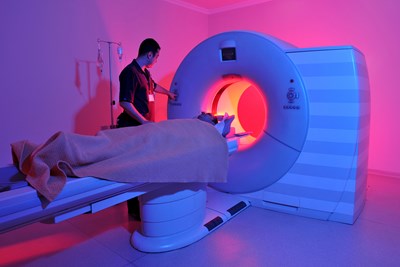How is Brain Cancer Treated?
Cancer, let alone brain cancer, is a diagnosis no one likes to hear. Like most cancers, brain cancer patients do have options in regards to treatments available to them. Brain cancer usually presents itself in the form of tumors, and affects around 5,000 people in the U.S. each year.
Brain tumors either metastasize from other cancers in the body or form independently in the brain. Cancer metastasizes when the original tumor spreads to other parts of the body. Not all tumors are cancerous; often a tumor can be found to be benign. However, a benign tumor may still present a health risk.
Brain tumors are typically named after the locations in the brain in which they are found. Brain cancer treatment depends on the type of tumor, its location, and its size. Additional factors to consider include the patient's age and general health. Frequently, more than one treatment option is performed in order to increase a patient's chances of cancer remission.
Listed from most intrusive to least intrusive, treatment options typically include the following:
- Surgery involves the removal of the tumor. In order for a surgery to be performed, the tumor must to be positioned in such a way it can be removed. Surgery is also risky as the surgeon must remove all of the cancerous cells in order for the cancer not to return.
- Chemotherapy tries to kill cancerous cells with potent drugs. The effects of chemotherapy are well known and usually very painful. An individual would have to be in otherwise good health in order to undergo chemotherapy treatments. Chemotherapy is the preferred method of treatment for children as other methods may damage still developing brains.
- Radiation therapy is used to try and kill cancerous cells with the use of high-energy radiation. Radiation is typically used in conjunction with surgery in order to try and kill any remaining cells left from surgery. The number of treatments range from 10 to 30 sessions depending on the severity of each case.
- Radiosurgery on the other hand is one of the least evasive treatments for brain tumors. Unlike radiation therapy, radiosurgery uses multiple beams of radiation to try and kill the tumor. The multiple radiation beams all take aim at a tumor at once and try to kill the cancerous cells. Radiosurgery is can be performed as an outpatient medical procedure, which does not require a hospital stay.
- Finally, the least evasive medical treatment is targeted drug therapy. Unlike chemotherapy, drug therapy is designed to try and block abnormalities present in cancerous cells.
Each treatment is not without risk. Some forms of brain cancer have a better prognosis than others. The outlook for cancer treatment response is better for younger people, ages 15 to 39.
After treatment, a patient will typically have to undergo some type of therapy in order speed their recovery. Therapy may include: physical therapy, occupational therapy, speech therapy, and possible tutoring for school-age children depending on the age of the patient. Other treatments which are said to aid recovery may include: support groups, acupuncture, hypnosis, meditation, music therapy, along with proper diet and exercise.



